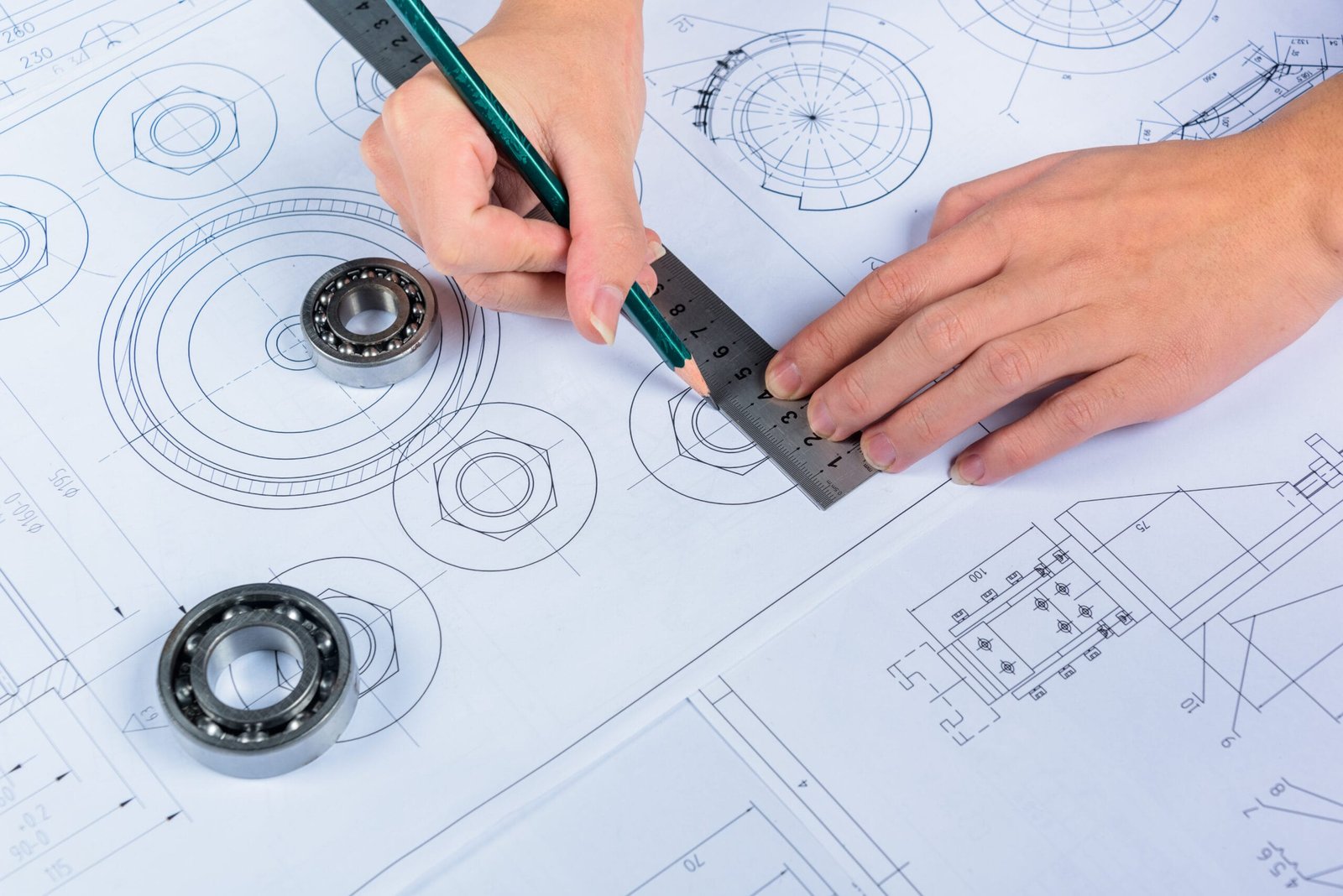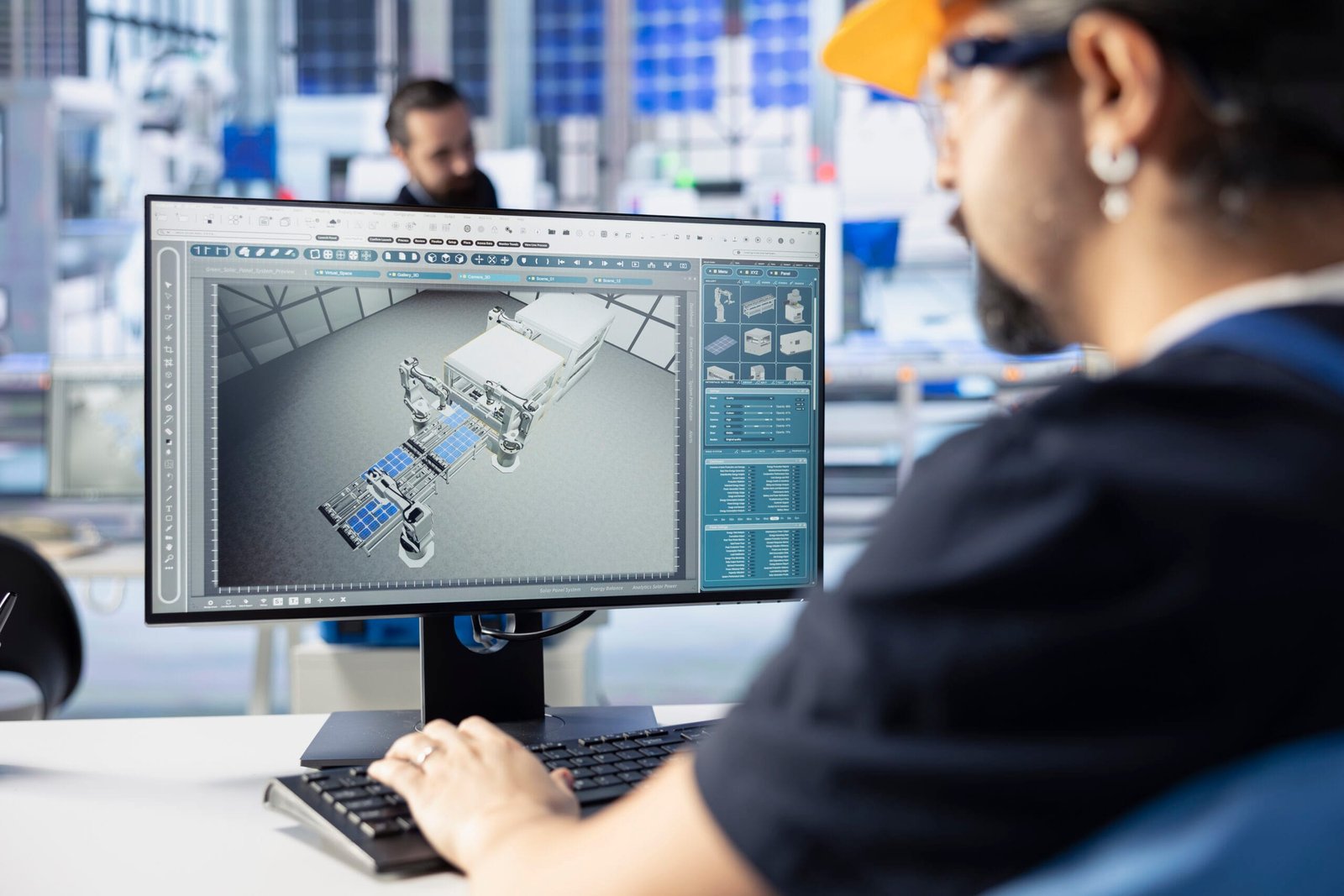Threaded connections in mechanical assemblies are among the most commonly used joining methods in engineering. From lightweight consumer products to high-performance aerospace systems, these connections provide secure fastening, easy disassembly, and cost-effective repeatability. Yet, despite their widespread usage, they often become a hidden source of failure if not designed and installed correctly.
In this comprehensive guide, we will explore the types, advantages, drawbacks, failure mechanisms, and design considerations associated with threaded connections in mechanical assemblies. Whether you’re a seasoned design engineer or an engineering student, this detailed breakdown will help you make better design decisions.
What Are Threaded Connections in Mechanical Assemblies?
Threaded connections in mechanical assemblies refer to fasteners (like bolts, screws, and nuts) that use helical threads to join components. The mating threads generate axial clamping force and friction that resists external loads such as tension, vibration, and shear.
These connections are favored for their ability to be tightened or removed repeatedly without damaging the mating components. They also accommodate standardization across industries, making repairs and replacements quicker.
Types of Threaded Connections in Mechanical Assemblies
A clear understanding of the different types of threaded connections in mechanical assemblies is vital for choosing the right fastener.
1. Bolted Connections
Bolts pass through unthreaded holes in joined components and are secured with nuts. They allow high pre-load and are easy to disassemble.
2. Screwed Connections
Screws engage directly with internal threads in one of the components. These are useful for lightweight or medium-load applications.
3. Stud-Bolt Assemblies
Studs have threads on both ends and are permanently screwed into one component, while nuts secure the second. Often used in high-pressure systems.
4. Threaded Inserts
Used in softer materials like aluminum or plastic, inserts provide robust internal threads and prevent stripping during repeated usage.
5. Self-Tapping and Self-Drilling Screws
These fasteners cut their own thread as they are driven in, eliminating the need for pre-threaded holes.
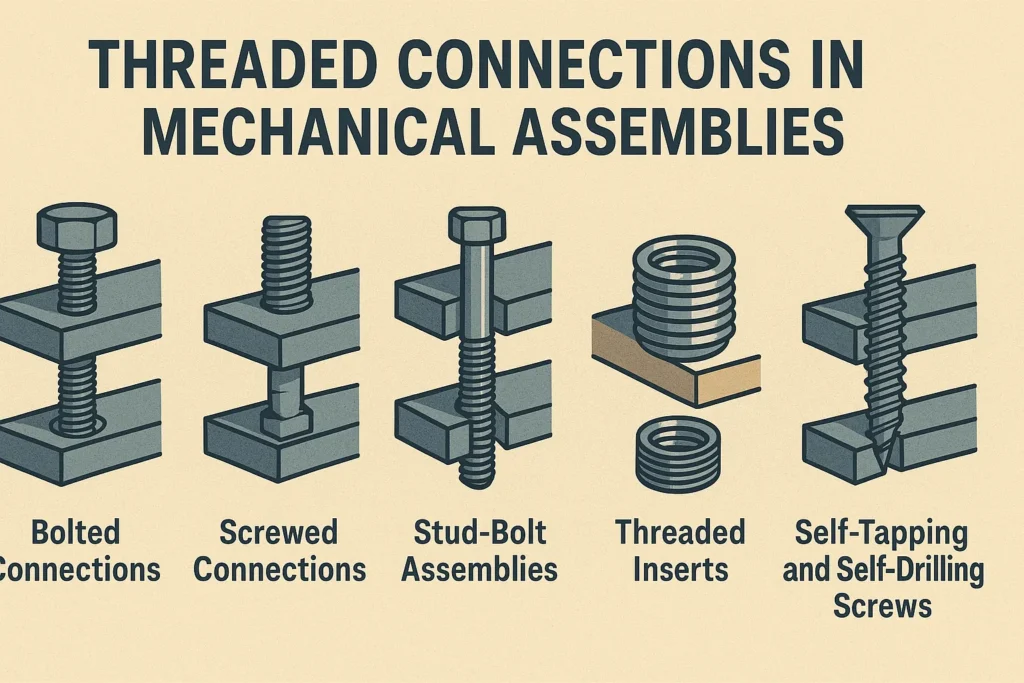
Benefits of Threaded Connections in Mechanical Assemblies
When properly selected and installed, threaded connections in mechanical assemblies offer several compelling advantages:
Positive Aspects
- Reusability: Components can be disassembled and reused without significant degradation.
- Versatility: Compatible with a wide range of materials, including metals, plastics, and composites.
- Adjustability: Easy to tighten, loosen, or fine-tune during maintenance.
- Standardization: Global standards (ISO, ASME) simplify part replacement and inventory management.
Negative Aspects (To Watch Out For)
- Vibration Loosening: Without proper locking mechanisms, vibration can lead to gradual loosening.
- Overtightening: This may cause thread stripping or material deformation.
- Corrosion: Threads can become corroded in harsh environments, making removal difficult.
Common Failure Modes in Threaded Connections
Ignoring proper design principles can lead to failure even in basic threaded connections in mechanical assemblies. Below are common failure modes:
1. Thread Stripping
Occurs when shear stress exceeds the thread’s material strength. Usually happens due to overtightening or poor thread engagement.
2. Bolt Fracture
Sudden breakage due to tensile overload, fatigue, or improper material selection.
3. Self-Loosening
Repeated vibrations may cause threads to back off, especially in dynamic machinery.
4. Galling
Occurs when similar metal threads weld together due to friction, leading to severe thread damage during tightening or loosening.
5. Corrosion Fatigue
Environmental factors, combined with stress, can weaken threads over time, eventually causing failure.
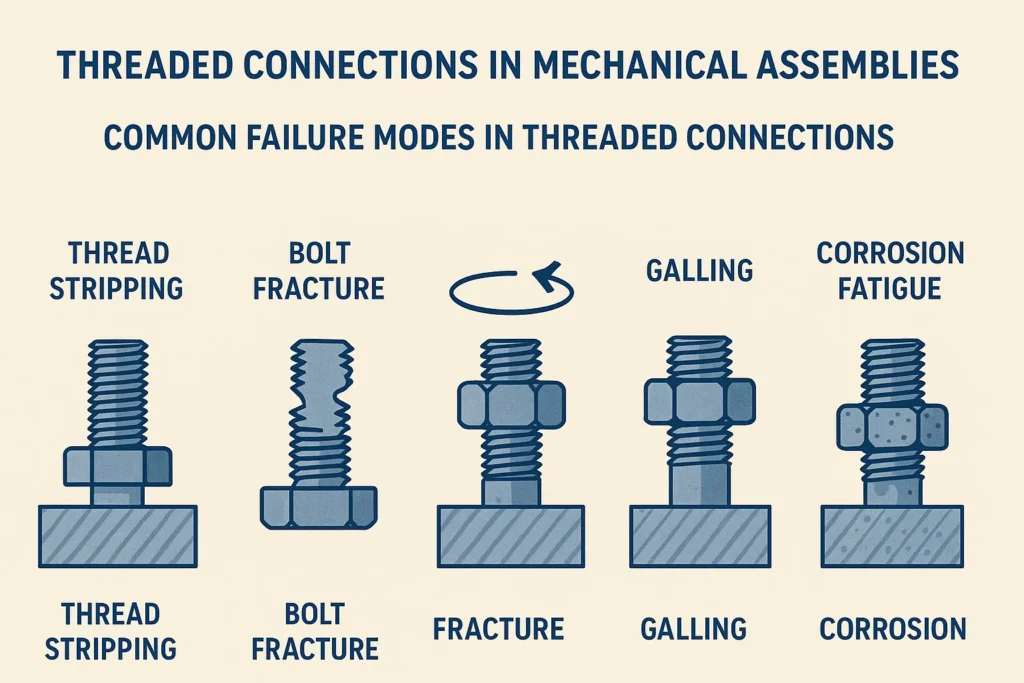
Critical Design Considerations for Threaded Connections
Designing reliable threaded connections in mechanical assemblies involves more than just selecting the right bolt size.
Material Compatibility
Always select fasteners made of materials compatible with the host components. Mismatched metals may cause galvanic corrosion.
Thread Engagement
A good rule of thumb is that the minimum thread engagement length should be 1.5 times the bolt’s diameter in softer materials.
Preload and Torque
Calculating appropriate torque is essential to ensure proper clamping without overstressing the material.
Locking Mechanisms
Use washers, nyloc nuts, thread-locking adhesives, or prevailing torque nuts to minimize vibration-related loosening.
Surface Finish and Lubrication
Reducing friction during installation helps achieve more consistent preload values and prevents galling.
Applications of Threaded Connections in Mechanical Assemblies
From simple fixtures to complex machine assemblies, threaded fasteners dominate every sector:
- Aerospace: High-strength threaded inserts and studs for high-temperature or high-pressure environments.
- Automotive: Bolted engine mounts, transmission housings, and chassis assemblies.
- Construction Equipment: Heavy-duty bolts used in frame connections and hydraulic systems.
- Medical Devices: Miniature screws in surgical tools and implants.
- Consumer Electronics: Precision screws securing enclosures and internal PCBs.
Expert Tips to Improve Reliability
If you want to optimize threaded connections in mechanical assemblies, consider the following expert recommendations:
- Use Torque Wrenches: Always apply controlled torque during installation.
- Avoid Reuse of Critical Fasteners: Especially in aerospace or load-sensitive applications.
- Apply Thread Lockers When Necessary: Use anaerobic adhesives or locking compounds for dynamic applications.
- Conduct Periodic Inspections: Especially in high-vibration or mission-critical systems.
Real-World Example: Failure Due to Improper Preload
In a recent manufacturing scenario, a client experienced recurring bolt failures in a robotic joint. Upon inspection, it was found that threaded connections in mechanical assemblies were being over-torqued during installation. This led to fatigue cracks over time. Switching to a calibrated torque wrench and increasing thread engagement resolved the issue permanently.
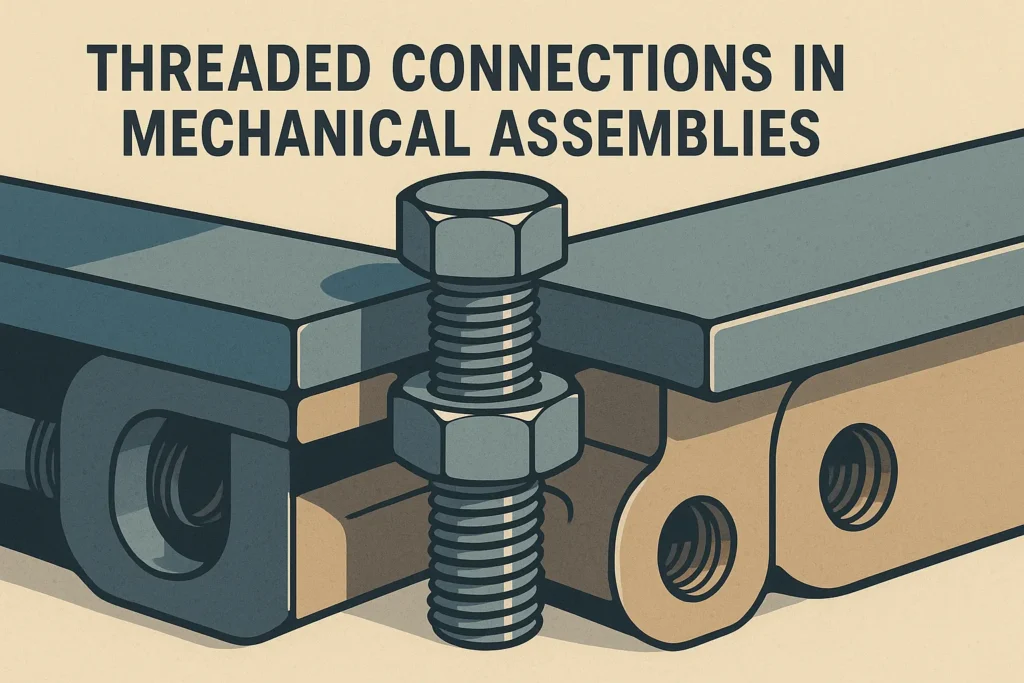
Frequently Asked Questions (FAQ)
Q1: How do I choose the right threaded connection for my application?
A: Consider material, load conditions, assembly/disassembly frequency, and environment. Always follow design standards like ASME B18 or ISO metric threads.
Q2: Can I reuse threaded connections?
A: It depends. Low-stress and non-critical applications allow reuse, but critical systems (like aerospace) recommend using new fasteners every time.
Q3: What are signs of thread failure?
A: Signs include thread deformation, loosening, abnormal noises during operation, or visible cracks.
Q4: What’s the role of lubrication in thread reliability?
A: Lubrication reduces friction, making torque application more predictable and preventing galling or corrosion.
Conclusion: Why Threaded Connections Still Matter in 2025
Threaded connections in mechanical assemblies continue to be a backbone of mechanical design. Despite advances in adhesives and welding, the reusability, flexibility, and accessibility of threaded fasteners make them a superior option in many contexts.
Still, careless design and installation can transform a reliable joint into a failure point. That’s why it’s essential to follow best practices, understand the application environment, and consider long-term durability. With proper knowledge, engineers can significantly extend the life and safety of assemblies using this time-tested joining method.
In the ever-evolving engineering world of 2025, mastering threaded connections in mechanical assemblies is not optional—it’s essential.



